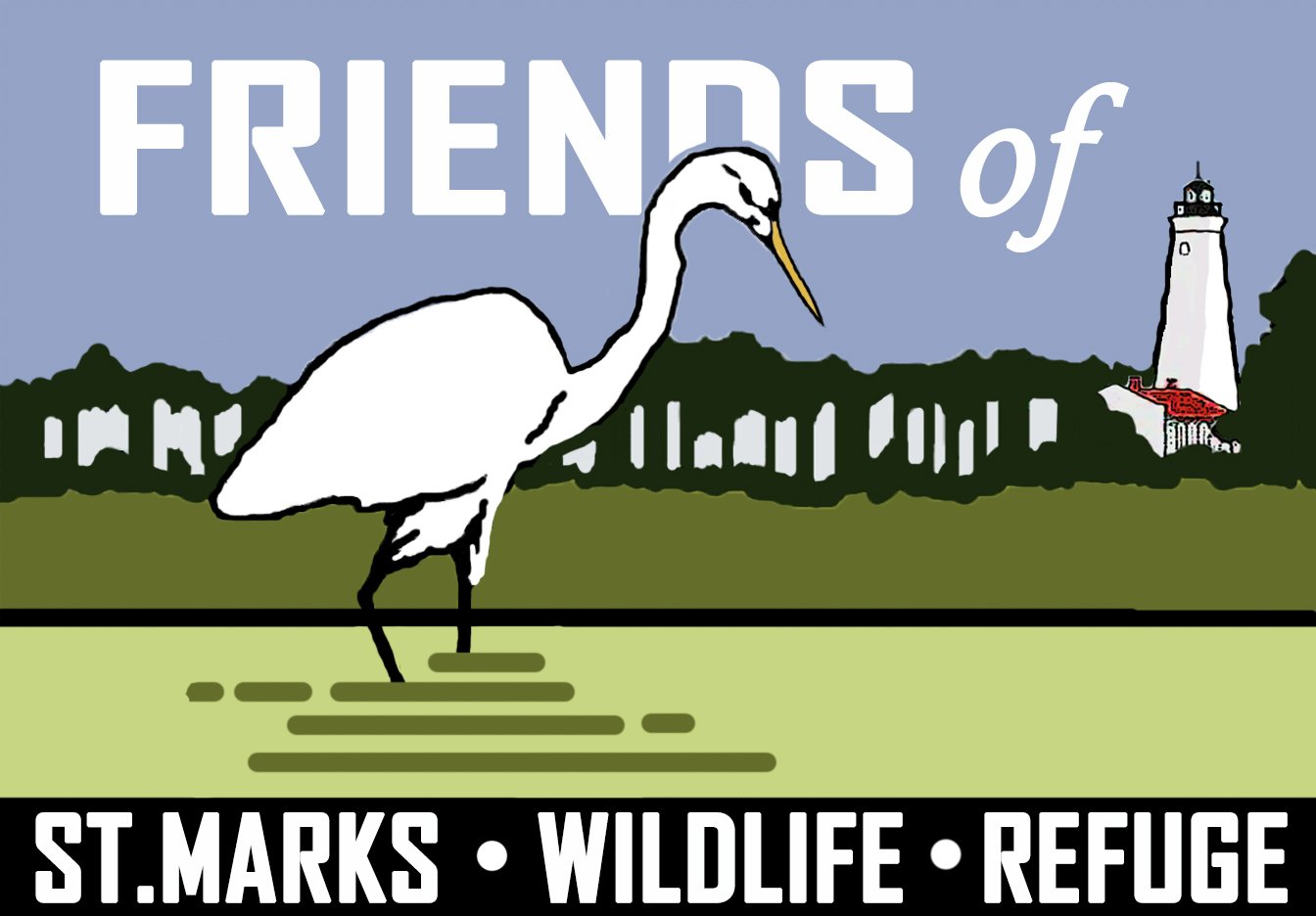Red-cockaded Woodpeckers
Once considered common in the southern U.S., the Red-cockaded Woodpecker declined 86% from 1966 to 2014 according to the North American Breeding Bird Survey. Since 1970 it has been federally listed as Endangered by the U.S. Fish and Wildlife Service. The Red-cockaded Woodpecker is only found in the United States and only in the Southeast [1]. Read more about the importance of this foundational species below.
Active refuge management of the Red-cockaded Woodpecker habitat and population at St. Marks NWR headed by Refuge biologist Joe Reinman has not only prevented extermination within the range locally, but actually fostered population growth. This initiative is still very active until robust numbers of these birds take hold.
The Friends organization supports this recovery effort by funding interns to work with Refuge biologists and rangers. The effort has two main components: installing artificial nest boxes and moving (‘translocating’) breeding pairs to the area with nest boxes.
Installing Artificial Nestboxes
Why are artificial nest boxes needed? Because it may take two years or more to completely dig out one cavity [2], so more energy is expended competing for existing home ranges instead of colonizing new areas.
So in an effort to increase the Red-cockaded Woodpecker population, wildlife management in states such as Texas, Louisiana, Alabama, Georgia and Florida is creating artificial cavities in Longleaf Pine trees.
There are two methods that wildlife management officers use to insert cavities in long leaf pines. The most respected, and latest approach, is to carve out a nesting cavity in the tree and insert a man-made nest. The process is described below below by former Refuge biologist, Jonathan Chandler.
In the videos below, Jonathan, with the help of former intern Chloë Dubben, prepares a Longleaf Pine for the installation of a man-made nest box, and then installs the box.
Moving Breeding Pairs to Their New Home
The process of moving Red-cockaded Woodpeckers has 3 stages: 1) preparation of the new home and neighborhood, 2) capturing and transporting the woodpeckers and 3) introducing the woodpeckers to their new home. Former intern Brianna Bjordahl explains each stage in the videos below.
Stage 1 - Preparation
Stage 2 - Capturing and Transporting
Stage 3 - New Home
The Importance of the Red-cockaded Woodpecker
The Red-cockaded Woodpecker (RCW) is a territorial, non-migratory species that plays an important role in the shared environment of the southern pine forests. They are the only woodpecker species that chooses living trees when they excavate. While the RCWs may choose any pine source for nesting, the Longleaf Pine is preferred.
Red-cockaded woodpeckers are primary cavity nesters, meaning they are responsible for the construction of cavities. In the Refuge's Longleaf Pine ecosystem, there are many secondary cavity users that benefit from the RCWs work.
As a result, these woodpeckers are considered a foundational species because other pine forest animals use these cavities that contribute to species richness and diversity. Many species have been documented using RCW cavities, including birds, snakes, lizards, squirrels and frogs.
One reason that RCWs may choose Longleaf Pines is that they structurally possess small resin wells, which exude sap. By intermittent excavation of these wells, the RCWs keep the sap flowing, apparently as a cavity defense mechanism against snakes and other predators while the nest is active.
References
[1] Cornell Lab of Ornithology - All About Birds - Red-cockaded Woodpecker


